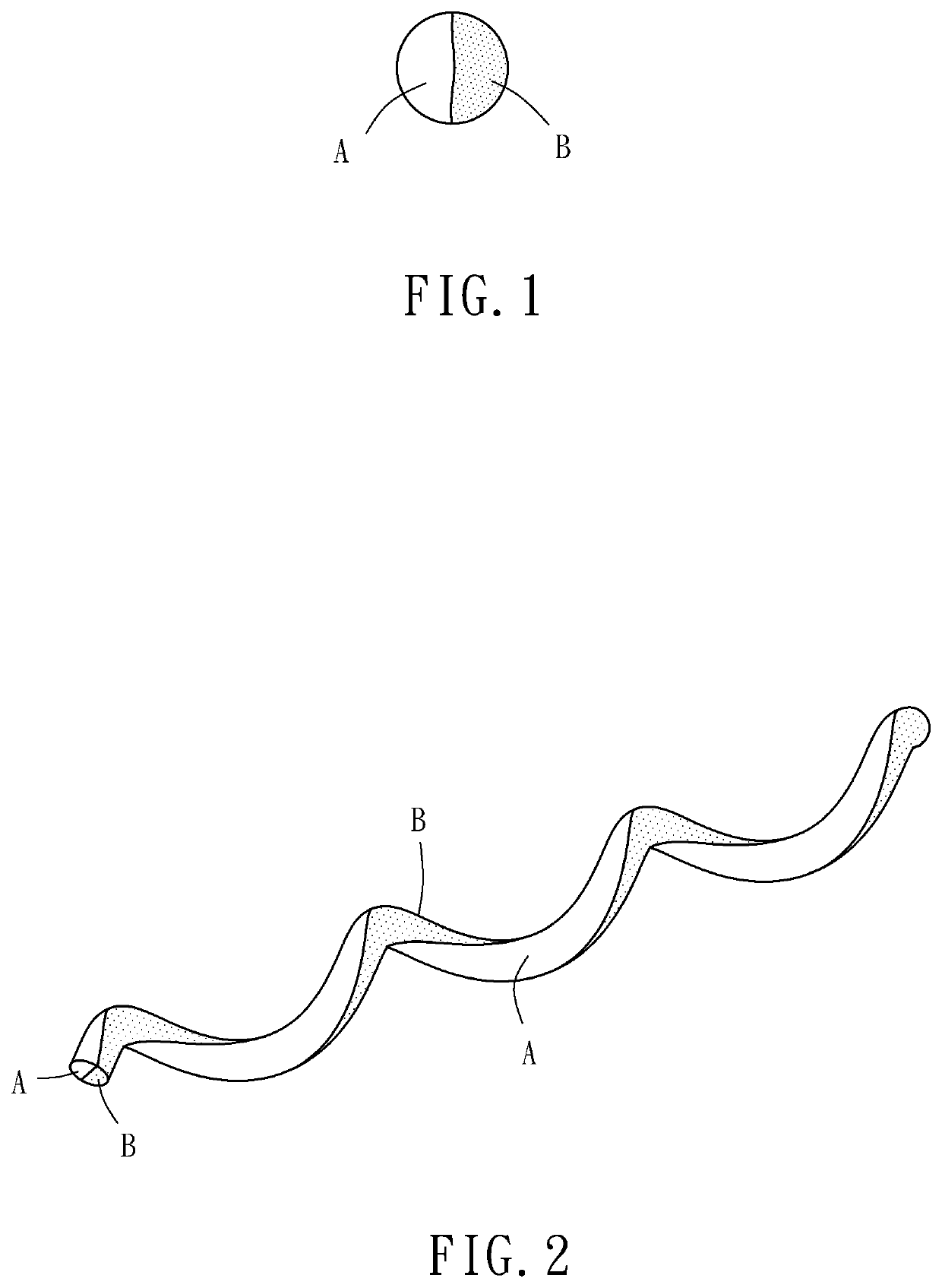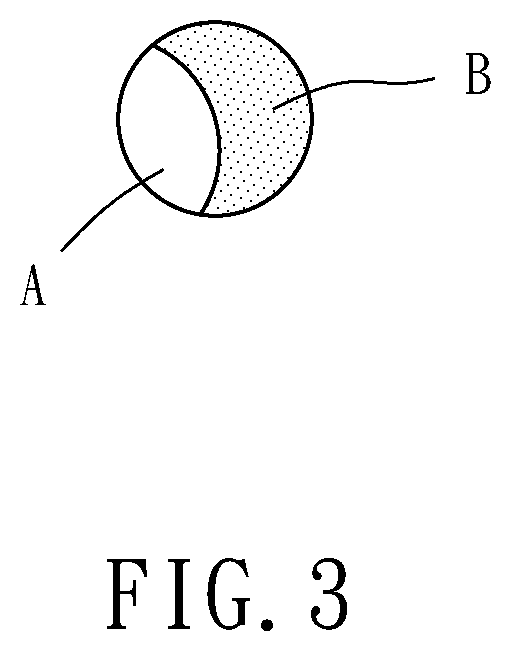Composite twist color fiber
a color fiber and composite technology, applied in the field of fibers, can solve the problems of fibers with a high contraction rate, fibers are susceptible to elastic fatigue, and their diameter decreases, and achieve the effect of low contraction rate and high elongation and retractability
- Summary
- Abstract
- Description
- Claims
- Application Information
AI Technical Summary
Benefits of technology
Problems solved by technology
Method used
Image
Examples
Embodiment Construction
[0010]Referring to FIG. 1 and FIG. 2, the present disclosure provides a composite twist color fiber. The composite fiber comprises a polymer A, i.e., polypropylene terephthalate (PPT), and a polymer B, i.e., cationic-dyeable polymer. The polymer A and the polymer B run side by side to jointly form one single fiber, such that the transverse cross section of the fiber shows that the polymer A and the polymer B run side by side. The polymer A and the polymer B differ in contraction rate. The aforesaid technique of joining two polymers side by side is also known as conjugate spinning, one of the conventional methods of manufacturing fiber yarns. The polymer A, i.e., polypropylene terephthalate (PPT), is a standard polyester fiber with a mechanical strength of 30.91˜52.98 cN / tex. Regardless of whether it is dry or wet, the polymer A has the highest degree of stability of physical properties and manifests low deformability, high tolerance to heat, high thermoplasticity, high lightfastness...
PUM
| Property | Measurement | Unit |
|---|---|---|
| total area | aaaaa | aaaaa |
| total transverse cross-sectional area | aaaaa | aaaaa |
| structure | aaaaa | aaaaa |
Abstract
Description
Claims
Application Information
 Login to View More
Login to View More - R&D
- Intellectual Property
- Life Sciences
- Materials
- Tech Scout
- Unparalleled Data Quality
- Higher Quality Content
- 60% Fewer Hallucinations
Browse by: Latest US Patents, China's latest patents, Technical Efficacy Thesaurus, Application Domain, Technology Topic, Popular Technical Reports.
© 2025 PatSnap. All rights reserved.Legal|Privacy policy|Modern Slavery Act Transparency Statement|Sitemap|About US| Contact US: help@patsnap.com


